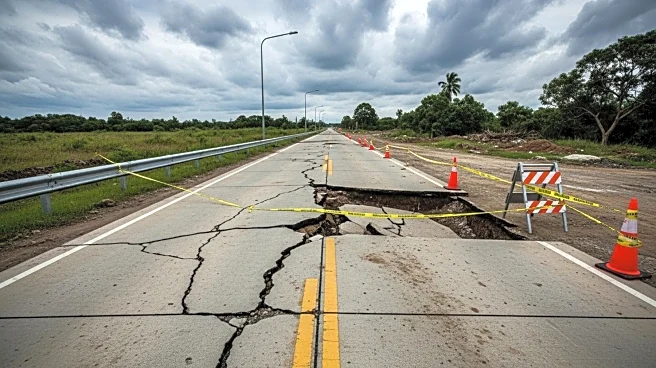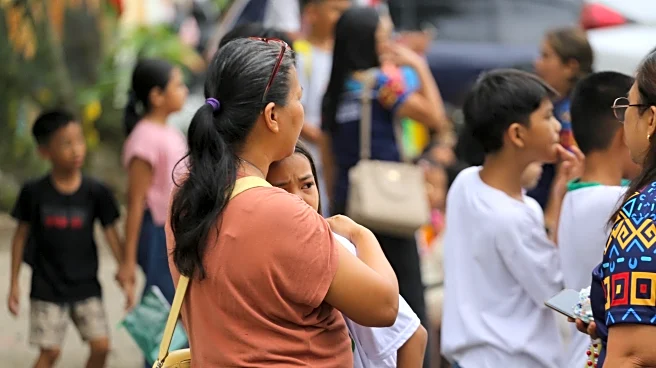What's Happening?
A powerful earthquake with a magnitude of 7.4 struck off the southern Philippines near Manay town in the Mindanao region on October 10, 2025. The quake resulted in at least six fatalities and prompted temporary tsunami warnings. An aftershock of magnitude 6.7 followed almost 10 hours later, contributing to the chaos. The earthquakes caused structural damage, including cracks in buildings and power outages, and led to evacuations. The Philippine authorities issued tsunami warnings, which were later lifted. The quakes also affected areas such as Davao City, where a plane was shaken by the aftershock, and Tagum City, where power outages occurred.
Why It's Important?
The earthquakes highlight the vulnerability of the Philippines, which is located on the Pacific 'Ring of Fire,' a region known for intense seismic activity. The immediate impact includes loss of life, injuries, and infrastructure damage, affecting local communities and disrupting daily activities. The event underscores the need for robust disaster preparedness and response strategies in the region. The economic implications could be significant, as rebuilding efforts may strain local resources and require international aid. The psychological impact on residents, who experienced panic and fear, is also considerable.
What's Next?
Authorities are likely to focus on assessing the full extent of the damage and providing aid to affected areas. Efforts will be made to restore power and communication lines, which are crucial for coordinating relief operations. The government may review and enhance its earthquake preparedness measures to mitigate future risks. International aid and support might be sought to assist in recovery efforts. The event could prompt discussions on improving infrastructure resilience in earthquake-prone regions.
Beyond the Headlines
The earthquakes may lead to long-term shifts in public policy regarding disaster management and infrastructure development. There could be increased investment in early warning systems and community education programs to better prepare residents for future seismic events. The cultural impact, including the psychological trauma experienced by survivors, may influence community dynamics and resilience-building efforts.












